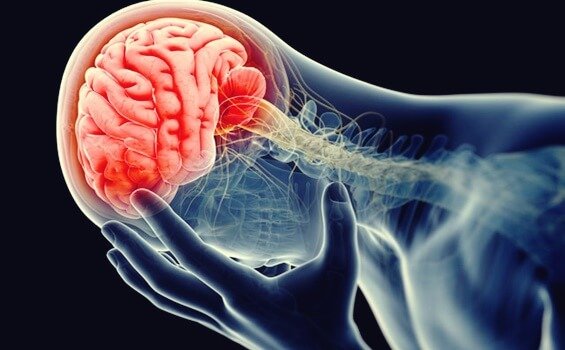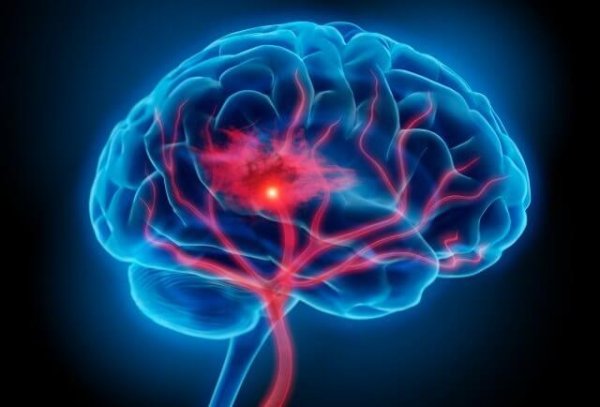Neuroinflammation, or the Inflammation Theory of Depression

Written and verified by the psychologist Valeria Sabater

There are more and more studies coming out in support of the inflammation theory of depression. They say there’s a link between some depressive disorders and chronic neuroinflammation caused by stress. What happens is that these hemodynamic and lymphatic changes lead your body to release too many cytokines. That’s what causes the psychological problems.
This isn’t a new idea. It’s actually part of something called the physical theory of depression. A lot of people think it plays a big part in developing endogenous depression. It might not seem very believable that a few pathogens and inflammatory substances could have such an impact on our emotional suffering, but the truth is that there’s been a lot of support for this idea in the past few years.
There are plenty of studies you can look at. Dr. Bruce Charlton, at Buckingham University, has been publishing studies about the relationship between excessive cytokines and depression for more than a decade. The neurologist Antonio Damasio has also talked about something called the “somatic marker.” What it means is that our body has a physical reaction to certain things it sees as a threat. For example, you go through tachycardia, inflammation, fevers…Then later on, the psychological suffering will come.
Let’s look at some more information about this topic.

What’s the basis for the inflammation theory of depression?
If you went onto the street right now and asked people what depression is, most people would probably just talk about the symptoms. Exhaustion, lack of energy, bad mood, desperation, emptiness, darkness, bitterness, and even physical pain. But if you try to get them to tell you what exactly leads to these paralyzing conditions, almost no one will be able to give you an objective answer.
That last question is especially a challenge in the medical and scientific fields. We should also point out that there’s not a clear agreement on the specific things that lead to this illness. It’s also much harder to reach an answer because of how many different kinds of depressive disorders there are. It’s a multifaceted condition that also shows up differently in every single person.
But in the last few years the inflammation theory of depression has started to gain some ground. If that’s the case, it would mean it’s a medical condition that has a huge link to people with a history of anxiety, stress, etc…If you want to understand it better, you can look at the information in this study published in the Journal of Clinical Psychiatry in 2016.

Depression as a psychoneuroimmune disorder
The department of Epidemiology at Janssen Research & Development in New Jersey did an interesting study where they followed 14,275 people with depression.
- They tracked them for 5 years, between 2007 and 2012.
- They also analyzed their blood multiple times during the study. One thing that showed up is that almost 60% of patients had 46% higher levels of C-reactive protein (CRP). This protein is one sign of an inflammatory illness.
- A lot of these patients didn’t respond to normal treatments for depression.
- They were also all people who dealt with stressful and/or anxious situations.
- The people with inflammatory illness signs also had a weaker immune system. Their injuries took longer to heal, and they had more colds, allergies, etc.
The researchers concluded that what they had was a psychoneuroimmune disorder. The inflammation theory of depression would make sense in these cases where their bodies had a specific reaction to stressful stimuli. The higher amount of cortisol in their blood leads their body to release cytokines, vasoactive amines, nitric oxide, glucocorticoids, etc…Then all of those things end up leading to psychological problems.
How can you reduce the risk of depression linked to inflammation?
The inflammation theory of depression says that you can prevent your symptoms. The main root for this condition is stress. It has to do with the way you manage anxiety and your worries. When you don’t, and those things become chronic, your body tries to defend itself from the threat. It won’t take long for biochemical changes and inflammation to start happening.
So if you want to avoid these paralyzing situations, you should learn some preventative strategies. We’ll show you a few of them right now.

Reduce your stress levels
Learn to prioritize. Remember that it’s about more than just resting your mind. Your body needs to see that calmness and internal balance too. It’s the only way for it to find its own balance, homeostasis. So give yourself time and attention. Give yourself some moments to relax.
A better diet
You have to avoid foods that cause inflammation: sugars, white wheat, saturated fat…Here are some better foods to eat:
- Red fruits: strawberries, cherries, reducrrants…
- Lemons and oranges.
- Turmeric.
- Whole wheat.
- Nuts.
- Leafy vegetables.
- Garlic.
- Pineapple.
- Tomatoes.
- Beets.
Regular physical exercise
Walking every day for half an hour, or running, swimming, dancing, etc…Put your body in regular motion and give it some life. Make your heart work, give your brain some oxygen, and let the endorphins and serotonin warm you up.
Relaxation exercises
We talk a lot about the benefits of yoga and mindfulness on our site. The inflammation theory of depression also says that these kinds of strategies are a great way to get back your internal balance. But the main thing is to give yourself time to work on anything that helps you personally relax.

Some people enjoy writing, painting, doing simple breathing exercises, or even spending time with certain people. The real goal is just to find a perfect place of balance, where your body and mind line up. It’s a state where nothing hurts, nothing worries you, and everything is nice and calm.
Try to make these things a routine for you. They’re definitely worth the effort, and of course, they’re worth your life.

There are more and more studies coming out in support of the inflammation theory of depression. They say there’s a link between some depressive disorders and chronic neuroinflammation caused by stress. What happens is that these hemodynamic and lymphatic changes lead your body to release too many cytokines. That’s what causes the psychological problems.
This isn’t a new idea. It’s actually part of something called the physical theory of depression. A lot of people think it plays a big part in developing endogenous depression. It might not seem very believable that a few pathogens and inflammatory substances could have such an impact on our emotional suffering, but the truth is that there’s been a lot of support for this idea in the past few years.
There are plenty of studies you can look at. Dr. Bruce Charlton, at Buckingham University, has been publishing studies about the relationship between excessive cytokines and depression for more than a decade. The neurologist Antonio Damasio has also talked about something called the “somatic marker.” What it means is that our body has a physical reaction to certain things it sees as a threat. For example, you go through tachycardia, inflammation, fevers…Then later on, the psychological suffering will come.
Let’s look at some more information about this topic.

What’s the basis for the inflammation theory of depression?
If you went onto the street right now and asked people what depression is, most people would probably just talk about the symptoms. Exhaustion, lack of energy, bad mood, desperation, emptiness, darkness, bitterness, and even physical pain. But if you try to get them to tell you what exactly leads to these paralyzing conditions, almost no one will be able to give you an objective answer.
That last question is especially a challenge in the medical and scientific fields. We should also point out that there’s not a clear agreement on the specific things that lead to this illness. It’s also much harder to reach an answer because of how many different kinds of depressive disorders there are. It’s a multifaceted condition that also shows up differently in every single person.
But in the last few years the inflammation theory of depression has started to gain some ground. If that’s the case, it would mean it’s a medical condition that has a huge link to people with a history of anxiety, stress, etc…If you want to understand it better, you can look at the information in this study published in the Journal of Clinical Psychiatry in 2016.

Depression as a psychoneuroimmune disorder
The department of Epidemiology at Janssen Research & Development in New Jersey did an interesting study where they followed 14,275 people with depression.
- They tracked them for 5 years, between 2007 and 2012.
- They also analyzed their blood multiple times during the study. One thing that showed up is that almost 60% of patients had 46% higher levels of C-reactive protein (CRP). This protein is one sign of an inflammatory illness.
- A lot of these patients didn’t respond to normal treatments for depression.
- They were also all people who dealt with stressful and/or anxious situations.
- The people with inflammatory illness signs also had a weaker immune system. Their injuries took longer to heal, and they had more colds, allergies, etc.
The researchers concluded that what they had was a psychoneuroimmune disorder. The inflammation theory of depression would make sense in these cases where their bodies had a specific reaction to stressful stimuli. The higher amount of cortisol in their blood leads their body to release cytokines, vasoactive amines, nitric oxide, glucocorticoids, etc…Then all of those things end up leading to psychological problems.
How can you reduce the risk of depression linked to inflammation?
The inflammation theory of depression says that you can prevent your symptoms. The main root for this condition is stress. It has to do with the way you manage anxiety and your worries. When you don’t, and those things become chronic, your body tries to defend itself from the threat. It won’t take long for biochemical changes and inflammation to start happening.
So if you want to avoid these paralyzing situations, you should learn some preventative strategies. We’ll show you a few of them right now.

Reduce your stress levels
Learn to prioritize. Remember that it’s about more than just resting your mind. Your body needs to see that calmness and internal balance too. It’s the only way for it to find its own balance, homeostasis. So give yourself time and attention. Give yourself some moments to relax.
A better diet
You have to avoid foods that cause inflammation: sugars, white wheat, saturated fat…Here are some better foods to eat:
- Red fruits: strawberries, cherries, reducrrants…
- Lemons and oranges.
- Turmeric.
- Whole wheat.
- Nuts.
- Leafy vegetables.
- Garlic.
- Pineapple.
- Tomatoes.
- Beets.
Regular physical exercise
Walking every day for half an hour, or running, swimming, dancing, etc…Put your body in regular motion and give it some life. Make your heart work, give your brain some oxygen, and let the endorphins and serotonin warm you up.
Relaxation exercises
We talk a lot about the benefits of yoga and mindfulness on our site. The inflammation theory of depression also says that these kinds of strategies are a great way to get back your internal balance. But the main thing is to give yourself time to work on anything that helps you personally relax.

Some people enjoy writing, painting, doing simple breathing exercises, or even spending time with certain people. The real goal is just to find a perfect place of balance, where your body and mind line up. It’s a state where nothing hurts, nothing worries you, and everything is nice and calm.
Try to make these things a routine for you. They’re definitely worth the effort, and of course, they’re worth your life.
This text is provided for informational purposes only and does not replace consultation with a professional. If in doubt, consult your specialist.







